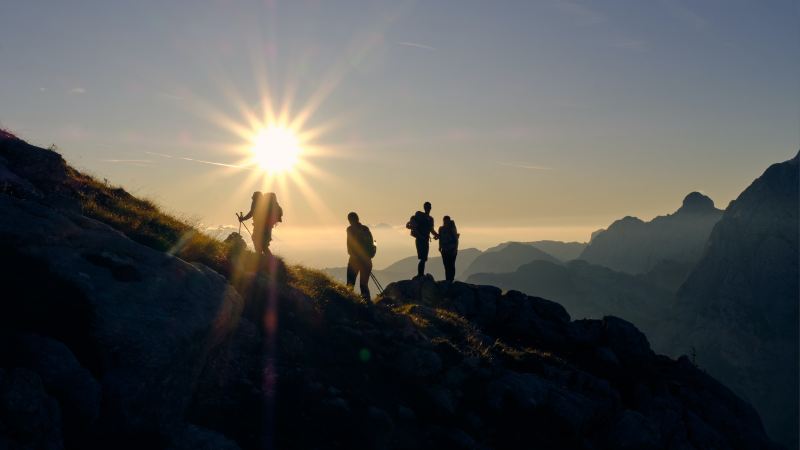
Dreams of summer hiking have kept plenty of trail lovers going through the winter while their favorite hiking routes have been deep in hibernation. Long days under the sun make the summer the perfect time to get hundreds of miles under your feet, but hiking in hot weather also comes with its challenges.
The dangers of hot weather hiking are genuine. If you aren’t prepared, hiking in the summer can be easily as dangerous and challenging as
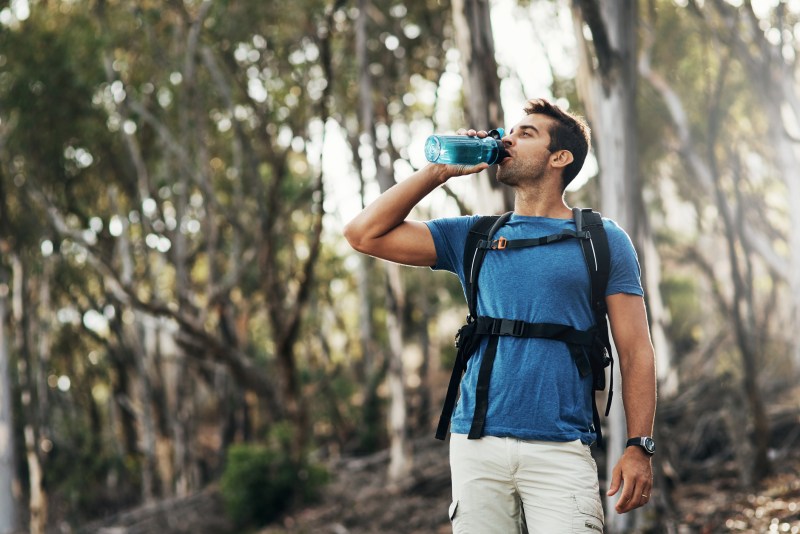
Hydrate, hydrate, hydrate
Drinking water on the trail year-round is essential, but when you’re hiking in hot weather, you must be even more diligent with your hydration. Whether you prefer a hydration bladder or an insulated water bottle, you should average around a liter of water every two hours while you’re out on the trail. Because this is more water than you will want to carry — each liter weighs about 2.2 pounds, or 1 kilogram — you should pack a water filtration system or purification tablets so that you can collect water on the trail.
Drinking water may prevent dehydration, but if all you do is chug gallons of water, then you put yourself at risk of overhydration. As you sweat, you lose more than just water. If you only replenish the water but not the salts and sugars your body needs, you can dilute important internal nutrients. To avoid this, ensure you eat trail snacks with salts or use electrolyte drinks or salt tablets to help maintain a healthy balance.
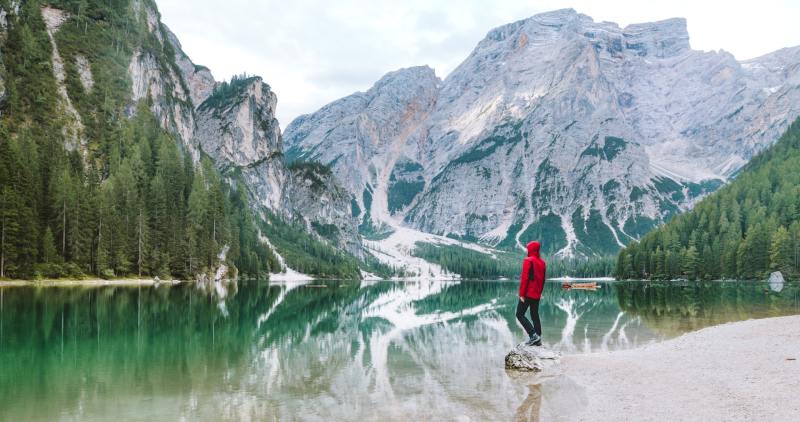
Plan for stops, shade, and water
Behind every successful hike is — or should be — a thorough plan. For summer hiking, your plan should include a detailed knowledge of shaded and exposed areas on your route. An exposed trail might be a fine choice for summer
Plan for water points for restocking and swimming or cooling off your feet along the way. Routes that spend most of their time at altitude often lack water, and you might have to plan an early descent to rehydrate or find shelter from the sun. Remember too that you will exert more energy in the heat and need to rest more. Plan your hiking timings to include more stops than usual, ideally in shaded areas.
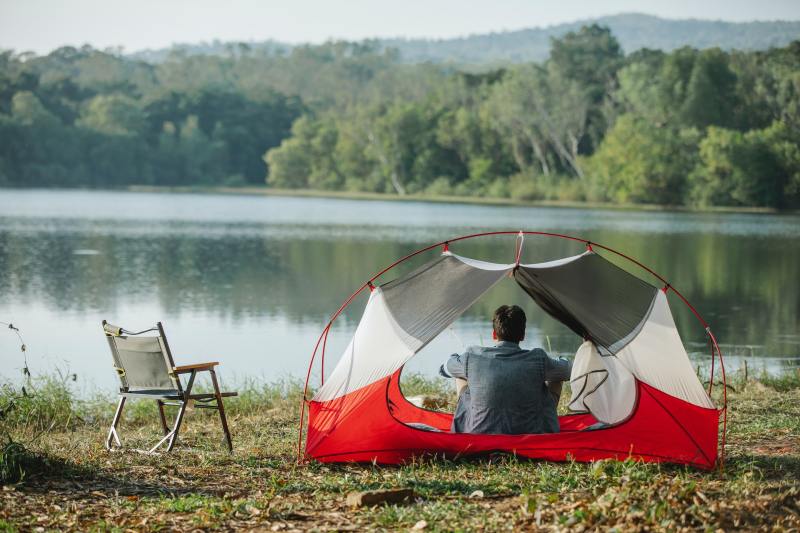
Have a midday siesta
No matter the time of year, it’s generally warmer when the sun is at its highest in the middle of the day. In the summer, the midday heat makes hiking unbearable and dangerously hot. Whether you’re thru-
Remember that you’re not alone in seeking cooler temperatures, though. The animal life that shares the trail is also more active around dawn and dusk, so be ready for bear encounters and other wildlife if you plan to take the middle of the day off. Also, be sure to pack a headlamp in case your late evening turns into a nighttime finish.
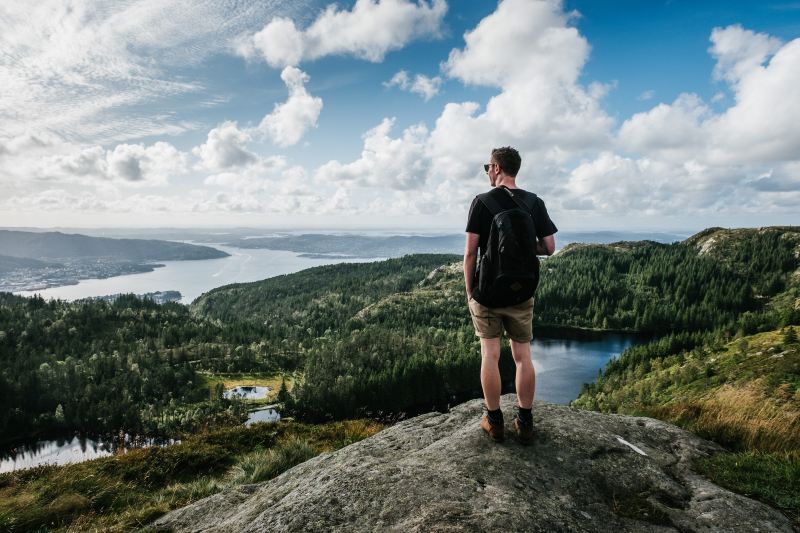
What to wear for hiking in summer
Layering in the summer is just as important as it is during the cooler months. Although the choices may differ slightly, the materials are still the same: Merino and synthetic layers over cotton. Cotton may be great in the heat if you’re not exerting yourself, but it won’t wick moisture once it becomes saturated with sweat. Moreover, you’ll cool down quickly when temperatures drop in the evening. Synthetic and merino layers are designed to wick away sweat during activity rather than holding it against your skin.
In hot conditions, looser layers will promote airflow around your body and encourage moisture management, keeping you dry and chafe-free. Long sleeves, pants, and even UV-protective clothing can be beneficial on exposed routes, where the sun’s rays are harsh on any exposed skin. Don’t forget the UV-protective cap, sunglasses, and sunscreen too. Finally, pack an extra layer for when the temperatures drop in the evening.
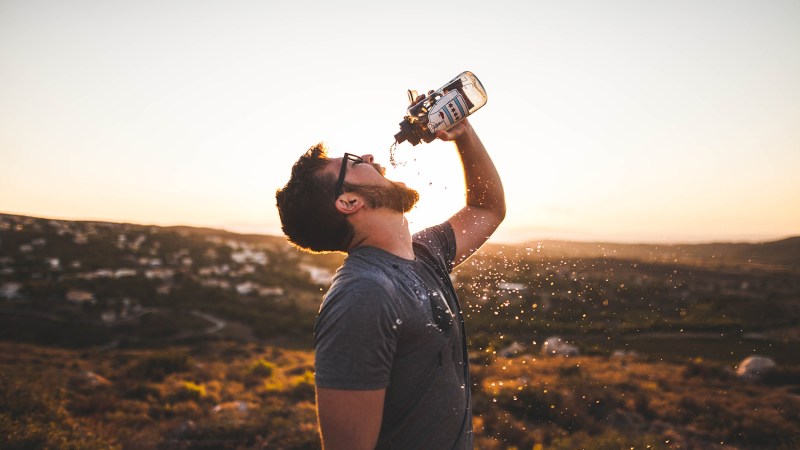
Recognize the signs of dehydration, heat exhaustion, and heat stroke
All the prevention in the world may not always stop you from succumbing to the summer heat, so it’s essential to recognize the signs and effects of dehydration, heat exhaustion, and heat stroke. As you experience any of these, your energy levels, decision-making, and general alertness will suffer. Whether hiking alone or in a group, you should learn the signs of each issue and be alert to them in yourself and your
Dehydration
Dehydration occurs when your body consistently loses more fluids — in this case, sweat — than it takes in. The onset of dehydration is simple: Thirst. If you’re thirsty on the trail, you must take in some water. If you’re peeing less often, or if your urine is dark and has a strong smell, then your body is experiencing dehydration. As dehydration progresses, you may experience headaches, dizziness, and nausea.
The longer-term effects of dehydration can be hazardous, and you should treat any signs as quickly as possible. So long as you’re regularly drinking before, during, and after your hike, you should remain hydrated. That means drinking some water alongside your post-hike beer too.
Heat exhaustion vs. heat stroke
These two often get confused. Heat exhaustion is linked to dehydration and the body’s loss of electrolytes and salts. In contrast, heat stroke is more severe and occurs when your internal body temperature rises and your body can no longer cool itself. While both can be dangerous, heat exhaustion can usually be solved by cooling the person down in the shade and rehydrating them properly. Heat stroke, however, will usually require emergency extraction and care, as the body has stopped being able to cool itself.
Heat exhaustion symptoms may include:
- Nausea and vomiting
- Headaches
- Exhaustion
- Muscle cramps
- Dizziness and feeling faint
- Heavy sweating and clammy skin
- Increased pulse
If someone doesn’t cool down in less than 30 minutes or exhibits any of the following, they may be experiencing heat stroke, and you should contact the emergency services immediately:
- Elevated internal body temperature
- Rapid pulse
- Loss or change of consciousness
- Cessation of sweating after a bout of heavy sweating, meaning the body is no longer actively trying to cool itself.



